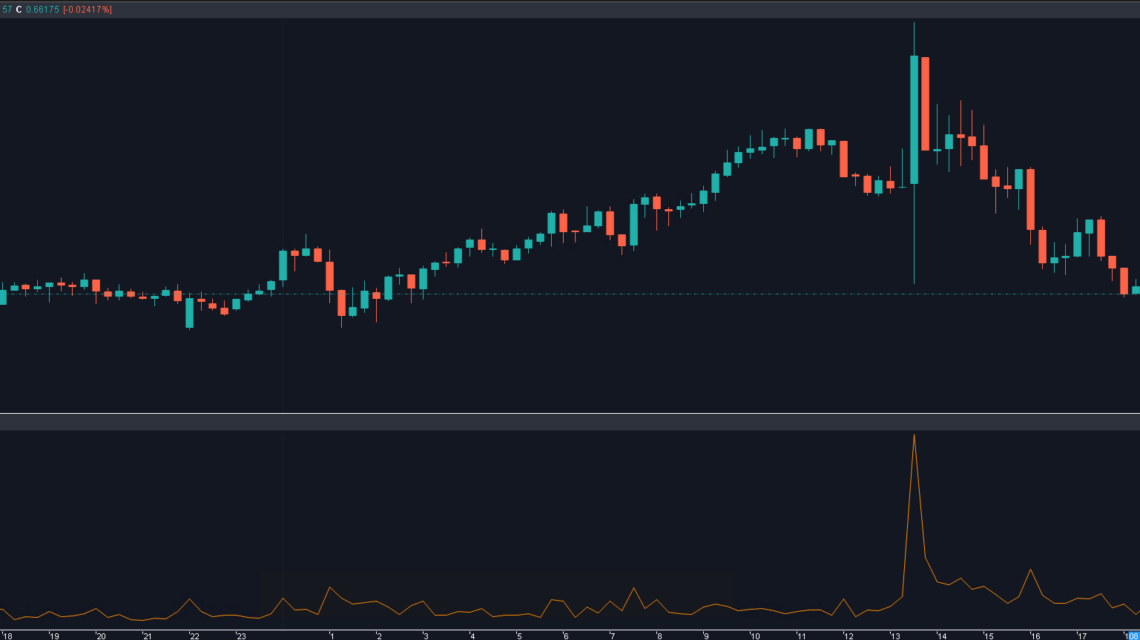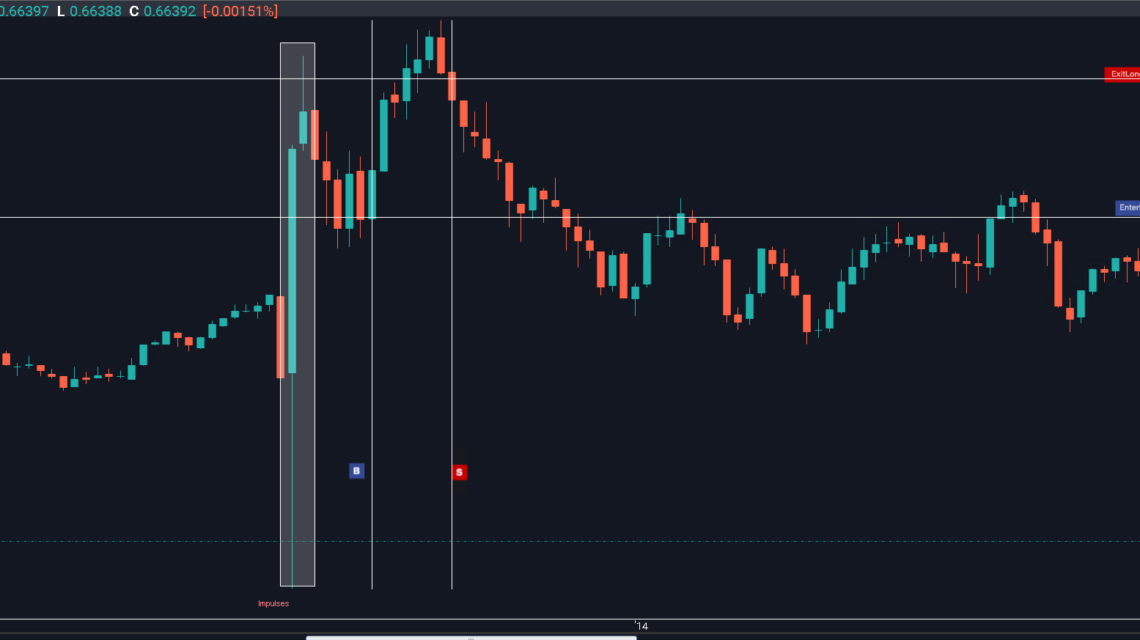Mastering the Momentum: A Guide to Impulse Trading in the Forex Market Friday March 8th, 2024 – Posted in: Forex trading – Tags: forex impulse trading, impulse trading, sharptrader, trendpulse
Context
- Delving into a bit of backstory
- Impulse Trading: Theory and Methods
- Impulse Trading in Forex
- Impulse Trading vs. Latent Arbitrage: Understanding the Key Differences
- Impulse Trading
- Latency Arbitrage
- Key Differences
- The Core Strategy of Impulse Trading
- Leveraging Indicators for Effective Impulse Trading: A Comprehensive Guide
- Refining the Impulse Trading Strategy to Minimize Risks
- Introducing TrendPulse: A Premier Forex Robot Powered by SharpTrader Arbitrage Platform
Impulse trading is one of the simplest and most effective ways to profit in the stock markets, Forex, and other exchanges. Traders who earn from impulses focus on highly active instruments with the potential for significant movements based on volume.
Delving into a bit of backstory
In 2006, I had the fortune of meeting a trader who had devised a strategy based on the reversal of RSI oscillators across different timeframes. The essence of the strategy was to identify a market impulse triggered by the synchronized reversal of oscillators in the same direction. He would wait for the oscillator on the penultimate, smaller timeframe to reverse in the opposite direction, while the oscillator on the last, smallest timeframe would turn towards the impulse. This moment marked the end of a technical retracement following a strong impulse move and served as an optimal point for entering a position. Later, I refined the strategy by incorporating the Maximum Entropy Spectrum Analysis (MESA) method. Our trading system showed promising results but had several drawbacks: it could only identify long-term movements based on strong impulses, necessitating a “long stop loss,” which was later “tightened.” This increased risks. Additionally, we could not enter the market immediately after an impulse appeared and had to wait for a technical retracement.
A few months ago, an idea struck us: pinpointing a market impulse in the Forex market and entering a position almost immediately after its emergence. To start, let’s understand what impulse trading entails.
Impulse Trading: Theory and Methods
For a deeper understanding, it’s crucial to distinguish two main concepts:
Impulse Trading involves initiating trades during strong and active market movements. Such positions can be held for as little as a few minutes or throughout the entire trading session, depending on the strength of the impulse and the potential for a trend reversal.
Impulse Scalping is a strategy based on continuously evaluating instruments and external markets capable of generating impulsive directional movements for a selected asset.
Impulse trading seeks to capture quick and sharp price movements driven by news, updates on yearly highs, and other significant events. The key to this trading approach is to wait for the right moment and respond swiftly.
The trading scheme is relatively straightforward, so this type only branches into a few strategies. Its core lies in the participant noticing a price jump of an asset in any direction and attempting to close the deal in the direction of the trend as quickly as possible.
An impulse differs from a classic trend in that it is more abrupt and less stable. Such movements typically do not feature significant retracements; the market plunges into an abyss or soars upwards. A vital characteristic of an impulse is increased volume, which is not typically characteristic of the instrument during the session. This sudden surge in activity can provide unique opportunities for trader’s adept at identifying and acting on these rapid market movements.
In the market, as elsewhere, everything happens for a reason. Impulses are no exception and occur due to certain conditions and premises converging. Let’s focus on the main reasons behind sudden market fluctuations:
- Fundamental Reasons – Caused by the release of significant news, as well as unforeseen disasters (earthquakes, political crises, wars, and much more).
- Technical Reasons – Related to the breaking of strong price levels, the approach of expiration dates for various options, and the end of futures contracts for the quarter.
- Psychological Reasons – Essentially, all impulses are connected to the psychological reaction of the crowd. More specifically, in this category, spikes in volume are noted when reaching round price levels (at marks with zeros, for example, 100, 1000, 5000, etc.), as well as in other situations linked to psychology.
This list is not exhaustive. It’s crucial to understand that any impulse is always associated with the appearance of a large volume, not just by one player in the market. Many individuals and organizations (hedge funds) are involved, leading to real panic where an asset can be sharply sold or bought. And there is always a corresponding reason for this.
Impulse Trading in Forex
Forex trading has abundant data sources, making it challenging to sift through information to find what will impact quotes. Traders often have to rely solely on charts.
Spreads’ influence is particularly pronounced in the currency market, as brokers frequently set them quite wide. Additionally, various requotes and slippages play a significant role. Despite many brokerage firms claiming to have NDD (No Dealing Desk) and STP (Straight Through Processing) technologies, these solutions don’t fully address the issue. For instance, slippage and spreads can be unfavorable for the trader during news releases and strong impulses, which is a natural occurrence. In contrast, the stock market generally offers more precise execution of trades, with only a commission being paid.
There are no high volumes at market opening since it operates 24/7 across all global sessions.
Thus, the Forex market is unique in impulse trading, but earning profits is entirely possible with the right experience. The beginning of this article provided suitable examples of currency trades and impulses. It’s worth reiterating that major news events are the primary source of such fluctuations in Forex.
Impulse Trading vs. Latent Arbitrage: Understanding the Key Differences
Impulse trading and Latency Arbitrage are two distinct strategies used in the financial markets, each with its methodology, goals, and risk profile. Understanding these differences can help traders choose the strategy that best suits their trading style and objectives.
Impulse Trading
Definition: Impulse trading focuses on capitalizing on short-term, strong movements in the market. News releases, economic events, or significant market sentiment shifts often drive these movements.
- Traders use technical analysis, chart patterns, and sometimes fundamental analysis to predict sudden market movements. The strategy involves entering trades during these quick, strong movements and exiting them as soon as the movement starts to fade or a predetermined profit target is reached.
- The risk in impulse trading comes from the market’s volatility. The same rapid movements that can lead to significant profits can also result in substantial losses. Traders mitigate these risks through tight stop-loss orders and money management techniques.
- Impulse trading can be applied in any market but is particularly popular in Forex, stocks, and commodities markets, where news and events frequently trigger quick price changes.
Latency Arbitrage
- Latency Arbitrage or one-leg arbitrage is a strategy that exploits temporary inefficiencies in the pricing between different markets or instruments. It is often used in the Forex market and involves making virtually risk-free profits by simultaneously buying and selling the same asset in other markets with slight price differences.
- This strategy requires sophisticated technology and algorithms to identify and execute trades quickly before the market inefficiencies correct themselves. It often involves high-frequency trading (HFT) techniques and access to high-speed data feeds to be successful.
- Latency Arbitrage risks are generally lower than impulse trading since the strategy seeks to exploit minor, almost guaranteed price differences. However, the profit per trade is also lower, and high volumes are necessary to achieve significant returns. The primary risk comes from execution speed and the possibility of the price difference disappearing before the arbitrage can be completed.
Market Environment: Latency Arbitrage is mainly applicable in markets with high liquidity and tight spreads, such as Forex and, to some extent, stock markets. It requires access to multiple markets or brokers to exploit the price differences.
Key Differences
- Impulse trading aims to profit from market volatility and strong price movements, whereas Latency Arbitrage seeks to exploit small pricing inefficiencies between markets.
- Impulse trading carries a higher risk due to market volatility, while Latency Arbitrage carries a lower risk as it capitalizes on almost guaranteed price differences.
- Impulse trading relies on technical and sometimes fundamental analysis, while Latency Arbitrage depends on advanced technology and algorithms for quick execution.
- Impulse trading can be done in any volatile market, whereas Latency Arbitrage requires specific liquidity conditions and access to multiple trading venues to be feasible.
Each strategy has its place in a trader’s toolkit, and choosing between them depends on the trader’s risk tolerance, capital, access to technology, and market knowledge.
The Core Strategy of Impulse Trading
The essence of earning through impulse trading lies in capitalizing on the momentum following an impulse. Setting the correct target is crucial; it shouldn’t be overly ambitious nor too modest. Each financial instrument demands a bespoke analysis and testing in this context. A general benchmark is to aim for 50% of the impulse size, which tends to be effective across most markets.
In some scenarios, aiming for 100% of the movement might seem tempting, yet it inherently carries a higher risk. The strategy typically employs stop orders at a ratio of 1:1 or 1:2, varying with the instrument’s typical behavior and the trader’s style. Seasoned impulse traders closely monitor the instrument’s activity and the tape, intuitively gauging whether the movement will continue.
Thus, the impulse trading strategy is outlined as follows:
- Entry Point: Immediately after closing the impulse’s minute candle.
- Stop-Loss: Set at 50% of the impulse.
- Take-Profit: Between 50-100% of the impulse.
This strategy is simple yet effective. Its main drawback is that such impulses are not always frequent, often rare. Therefore, while it might not yield substantial profits, it can provide relatively stable returns (approximately 80-85% of cases).
It’s also important to note that before implementing any strategy in live trading, it should be rigorously tested on historical data or in a simulator. Adjustments to the target size and stop order may be necessary, with each scenario requiring a tailored approach.
Leveraging Indicators for Effective Impulse Trading: A Comprehensive Guide
Traders who capitalize on market impulses may incorporate various indicators into their strategy. These indicators serve to simplify and visually enhance chart analysis. Still, they should not be seen as definitive guides to market movement or precise entry points—a sentiment many experienced traders echo.
In impulse trading, both trend indicators and oscillators can prove beneficial. Here’s an illustration of a chart augmented with a standard set of indicators:
Key features include:
- Volume (Volumes): This is a critical indicator for an impulse trader, confirming that the observed significant candlestick represents a genuine surge in market transactions, not just an anomaly.
- Moving Average with a 9-period setting, where the calculation variation (Simple, Exponential) is inconsequential. It assists in assessing the momentum and strength of the trend impulse. The slope of the moving average is crucial; a steeper angle indicates a stronger trend.
- Stochastic Oscillator (though other oscillators are also viable): This indicator is helpful in pinpointing potential reversal points.
Refining the Impulse Trading Strategy to Minimize Risks
In the preceding sections, I outlined the conventional approach to impulse trading. Many traders experiment by swapping indicators and adjusting timers for analysis, yet challenges persist, including delayed market entry and the risk of market reversal triggering stop-loss orders. In developing arbitrage strategies, we observed that the Forex market frequently experiences impulses in various directions, which, while advantageous for arbitrage trading, can undermine an impulse trading strategy. Such impulses may result from simultaneous conflicting economic news, leading traders to make diametrically opposed decisions. However, multiple impulses in the same direction, especially when accompanied by high volumes within a short timeframe, can initiate a lasting movement—a trend.
We introduced a trading bot on our SharpTrader platform to address these challenges, leveraging a refined approach to impulse and volume analysis. Users who have acquired the coding module for SharpTrader can utilize a volatility filter based on two ATR (Average True Range) indicators and even develop their own custom filters. This innovation offers a more nuanced way to engage with impulse trading, potentially reducing risks and enhancing strategy effectiveness.
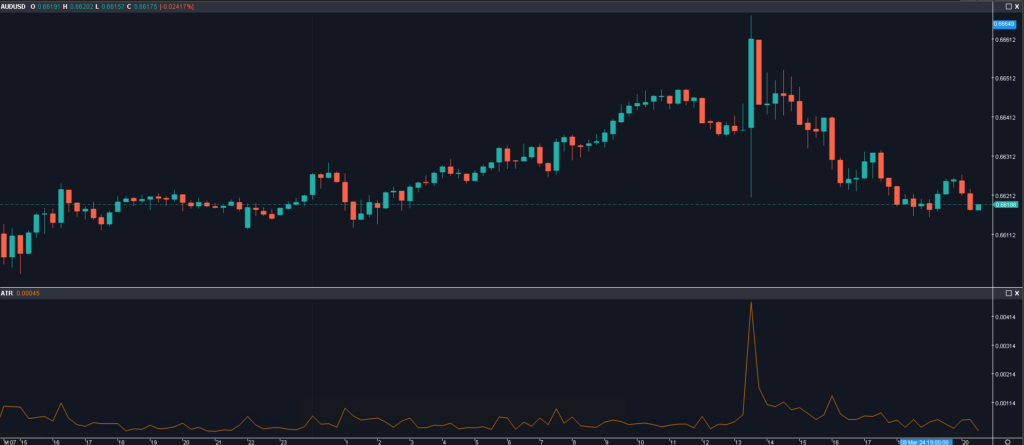
Figure 1: ATR (Average True Range) indicator
Introducing TrendPulse: A Premier Forex Robot Powered by SharpTrader Arbitrage Platform
TrendPulse is an advanced Forex robot, orchestrated under the sophisticated Forex arbitrage platform, SharpTrader. This dynamic integration grants it the capability to trade across virtually any broker or platform through the innovative SharpTrader connectors. Diverging from conventional arbitrage strategies, TrendPulse is designed with a broker-friendly ethos, abstaining from any trading practices considered toxic by Forex brokers.
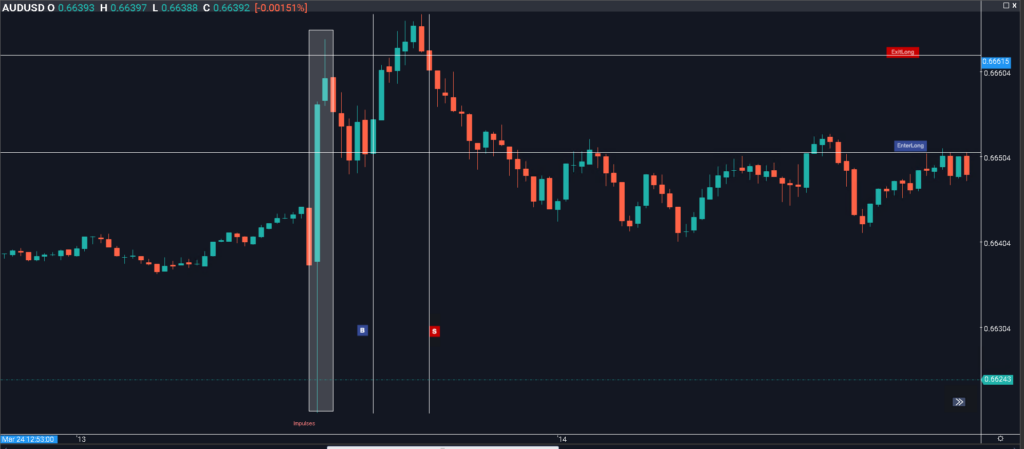
Figure 2: Capturing Momentum – AUDUSD on the M1 Chart
In this vivid snapshot, we observe the sharp impulses on the AUDUSD pair, meticulously charted on the minute-by-minute (M1) timeline. The strategy unfolds with precision as an order springs to life a mere 10 seconds post-impulse, deliberately bypassing the arbitrage window to ensure compliance and fair play. The journey of this trade concludes gracefully, with a trailing stop methodically securing profits in the wake of fluctuating market waves.

Figure 3: Strategic Execution – A Snapshot of Success in AUDUSD Trading
Diving into the heart of market dynamics, we spotlight a meticulous AUDUSD buy order executed on the 8th of March, 2024, precisely at 13:37:00. The order embarked at an opening price of 0.66509, navigating through the market’s ebb and flow. Within a mere 7 seconds, a swift and decisive closure was realized on the same day at 13:44:05, marking a closing price of 0.66623. This brief yet potent maneuver resulted in an impressive gain of 114 points, illustrating the precision and agility of strategic Forex trading.
At the heart of TrendPulse is an impulse trading algorithm, distinguished by a unique impulse indicator meticulously developed by the BJF Trading Group. This robot is adept at identifying a sequence of market impulses, thereby initiating positions at the dawn of trends propelled by these very impulses. An additional layer of strategy is introduced through the use of ATR (Average True Range) indicators, which assess market volatility essential for the sustenance of a trend. (Note: Utilization of the ATR filter and the creation of custom filters necessitate a coding module license from the SharpTrader platform).
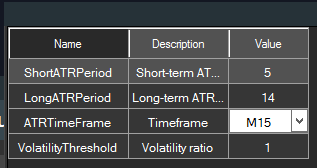
Figure 4: Filter based on two ATR indicators
Position exits are strategically executed via a trailing stop mechanism, ensuring that TrendPulse maintains a single position per trading instrument without amplifying the position size following a loss. This approach distinguishes it from martingale or grid strategies, positioning TrendPulse as a Forex robot with a minimal risk profile. Moreover, the robot employs a rapid feed to meticulously filter (and prohibit) entries during arbitrage scenarios that may emerge amidst the onset of impulses driven by various factors, such as the release of critical economic news, surges in trading volumes, or significant emotional market reactions. The Forex bot TrendPulse can be optimized using the built-in AI optimization module in SharpTrader.
TrendPulse is designed for the astute trader seeking to navigate the Forex market with precision, backed by the assurance of a platform engineered to adapt to the multifaceted dynamics of the financial world.
 Deutsch
Deutsch 日本語
日本語 العربية
العربية 한국어
한국어 中文
中文

